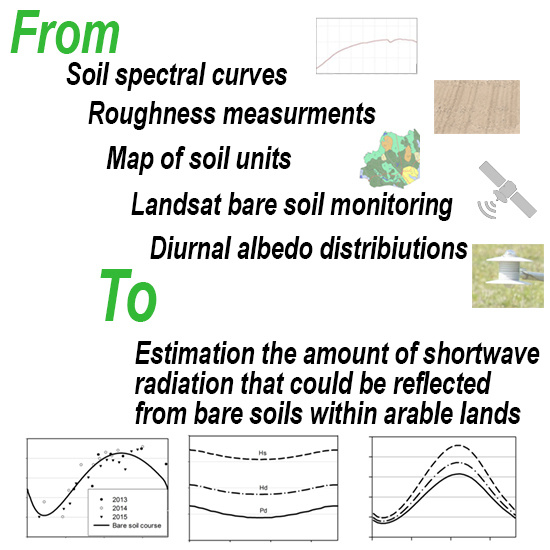Shortwave Radiation Affected by Agricultural Practices
Abstract
:1. Introduction
2. Materials and Methods
2.1. Study Area
2.2. Extracting Bare Soil Areas
2.3. Spectral Properties of Soil
2.4. Modeling of Albedo Using Soil Spectra
3. Results
3.1. Soil Units in the Study Area
3.2. Spectral Properties of Soil
3.3. Half Diurnal Albedo Distribution
3.4. Annual Distribution of Bare Soil
3.5. Annual Incoming Radiation
3.6. Reflected Radiation Dependent on Roughness
4. Discussion
5. Concluding Remarks
Acknowledgments
Author Contributions
Conflicts of Interest
References
- Dobos, E. Albedo. In Encyclopedia of Soil Science; Taylor & Francis: London, UK, 2006. [Google Scholar]
- Oke, T.R. Boundary Layer Climates; Routledge: London, UK, 1992. [Google Scholar]
- Rechid, D.; Jacob, D.; Hagemann, S.; Raddatz, T.J. Vegetation effect on land surface albedo: Method to separate vegetation albedo from the underlying surface using satellite data. Geophys. Res. Abstr. 2005, 7, 7962. [Google Scholar]
- Baumgardner, M.; Silva, L.; Biehl, L.; Stoner, E. Reflectance properties of soils. Adv. Agron. 1986, 38, 1–44. [Google Scholar]
- Cipra, J.E.; Baumgardner, M.F.; Stoner, E.R.; MacDonald, R.B. Measuring Radiance Characteristics of Soil with a Field Spectroradiometer1. Soil Sci. Soc. Am. J. 1971, 35, 1014. [Google Scholar] [CrossRef]
- Goldshleger, N.; Ben-Dor, E.; Benyamini, Y.; Agassi, M. Soil reflectance as a tool for assessing physical crust arrangement of four typical soils in israel. Soil Sci. 2005, 169, 677–687. [Google Scholar] [CrossRef]
- Mikhajlova, N.A.; Orlov, D.S. Opticheskie Svoystva Pochv i Pochvennych Komponentov; Russ. Nauka: Moscow, Russia, 1986. [Google Scholar]
- Matthias, A.D.D.; Fimbres, A.; Sano, E.E.E.; Post, D.F.F.; Accioly, L.; Batchily, A.K.K.; Ferreira, L.G.G. Surface roughness effects on soil albedo. Soil Sci. Soc. Am. J. 2000, 64, 1035–1041. [Google Scholar] [CrossRef]
- Ben-Gai, T.; Bitan, A.; Manes, A.; Alpert, P.; Rubin, S. Spatial and Temporal Changes in Rainfall Frequency Distribution Patterns in Israel. Theor. Appl. Climatol. 1998, 61, 177–190. [Google Scholar] [CrossRef]
- Schneider, S.H.; Dickinson, R.E. Climate modeling. Rev. Geophys. 1974, 12, 447. [Google Scholar] [CrossRef]
- Davin, E.L.; de Noblet-Ducoudré, N.; Friedlingstein, P. Impact of land cover change on surface climate: Relevance of the radiative forcing concept. Geophys. Res. Lett. 2007, 34. [Google Scholar] [CrossRef]
- Monteith, J.L.; Szeicz, G. The radiation balance of bare soil and vegetation. Q. J. R. Meteorol. Soc. 1961, 87, 159–170. [Google Scholar] [CrossRef]
- Lewis, P.; Barnsley, M.J. Influence of the Sky Radiance Distribution on Various Formulations of the Earth Surface Albedo. In Proceedings of the 6th International Symposium on Physical Measurements and Signatures in Remote Sensing, Val d’Isere, France, 17–21 January 1994; pp. 707–716. [Google Scholar]
- Wang, K.; Wang, P.; Liu, J.; Sparrow, M.; Haginoya, S.; Zhou, X. Variation of surface albedo and soil thermal parameters with soil moisture content at a semi-desert site on the western Tibetan Plateau. Bound. Layer Meteorol. 2005, 116, 117–129. [Google Scholar] [CrossRef]
- Oguntunde, P.G.; Ajayi, A.E.; Giesen, N. van de Tillage and surface moisture effects on bare-soil albedo of a tropical loamy sand. Soil Tillage Res. 2006, 85, 107–114. [Google Scholar] [CrossRef]
- Cierniewski, J.; Karnieli, A.; Kazmierowski, C.; Krolewicz, S.; Piekarczyk, J.; Lewinska, K.; Goldberg, A.; Wesolowski, R.; Orzechowski, M.; Kaźmierowski, C.; et al. Effects of soil surface irregularities on the diurnal variation of soil broadband blue-sky albedo. IEEE J. Sel. Top. Appl. Earth Obs. Remote Sens. 2015, 8, 493–502. [Google Scholar] [CrossRef]
- Sellers, P.J.; Meeson, B.W.; Hall, F.G.; Asrar, G.; Murphy, R.E.; Schiffer, R.A.; Bretherton, F.P.; Dickinson, R.E.; Ellingson, R.G.; Field, C.B.; et al. Remote sensing of the land surface for studies of global change: Models—Algorithms—Experiments. Remote Sens. Environ. 1995, 51, 3–26. [Google Scholar] [CrossRef]
- Grant, I.F.; Prata, A.J.; Cechet, R.P. The Impact of the Diurnal Variation of Albedo on the Remote Sensing of the Daily Mean Albedo of Grassland. J. Appl. Meteorol. 2000, 39, 231–244. [Google Scholar] [CrossRef]
- Cierniewski, J.; Kazmierowski, C.; Krolewicz, S.; Piekarczyk, J. Effects of soil roughness on the optimal time of cultivated soils observation by satellites for the soils average diurnal albedo approximation. IEEE J. Sel. Top. Appl. Earth Obs. Remote Sens. 2013, 6, 1194–1198. [Google Scholar] [CrossRef]
- Cierniewski, J.; Krolewicz, S.; Kazmierowski, C.; Ceglarek, J.; Kusz, P. Shortwave radiation reflected from the territory of Poland throughout the year as an effect of smoothing soils previously plowed and harrowed. In Proceedings of the IEEE International Geoscience and Remote Sensing Symposium (IGARSS), Milan, Italy, 26–31 July 2015; pp. 4629–4632. [Google Scholar]
- Cierniewski, J.; Królewicz, S.; Kaźmierowski, C. Annual dynamics of shortwave radiation as consequence of smoothing of previously plowed and harrowed soils in Poland. J. Appl. Meteorol. Climatol. 2017, 56, 735–743. [Google Scholar] [CrossRef]
- Richter, R.; Schlapfer, D. Atmospheric/Topographic Correction for Satellite Imagery-ATCOR2/3 User Guide. Available online: http://www.rese.ch/pdf/atcor3_manual.pdf (accessed on 9 March 2018).
- Ravikovitch, S. Guidebook and Map of Israel Soils; Hebrew University Magnes Press: Jerusalem, Israel, 1969. [Google Scholar]
- Soil Survey Staff Soil Survey Field and Laboratory Methods Manual. Soil Survey Investigations Report No. 51, Version 2.0; U.S. Department of Agriculture: Lincoln, Nebraska, 2014; p. 407.
- Cierniewski, J.; Ceglarek, J.; Karnieli, A.; Krolewicz, S.; Kazmierowski, C.; Zagajewski, B. Predicting the diurnal blue-sky albedo of soils using their laboratory reflectance spectra and roughness indices. J. Quant. Spectrosc. Radiat. Trans. 2017, 200, 25–31. [Google Scholar] [CrossRef]
- Taconet, O.; Ciarletti, V. Estimating soil roughness indices on a ridge-and-furrow surface using stereo photogrammetry. Soil Tillage Res. 2007, 93, 64–76. [Google Scholar] [CrossRef]
- Allen, R.G.; Rick, G.; Food and Agriculture Organization of the United Nations. Crop Evapotranspiration: Guidelines for Computing Crop Water Requirements; Food and Agriculture Organization of the United Nations: Rome, Italy, 1998; ISBN 9251042195. [Google Scholar]
- Kustas, W.P.; Norman, J.M. Use of remote sensing for evapotranspiration monitoring over land surfaces. Hydrol. Sci. J. 1996, 41, 495–516. [Google Scholar] [CrossRef]
- Mira, M.; Olioso, A.; Gallego-Elvira, B.; Courault, D.; Garrigues, S.; Marloie, O.; Hagolle, O.; Guillevic, P.; Boulet, G. Uncertainty assessment of surface net radiation derived from Landsat images. Remote Sens. Environ. 2016, 175, 251–270. [Google Scholar] [CrossRef]
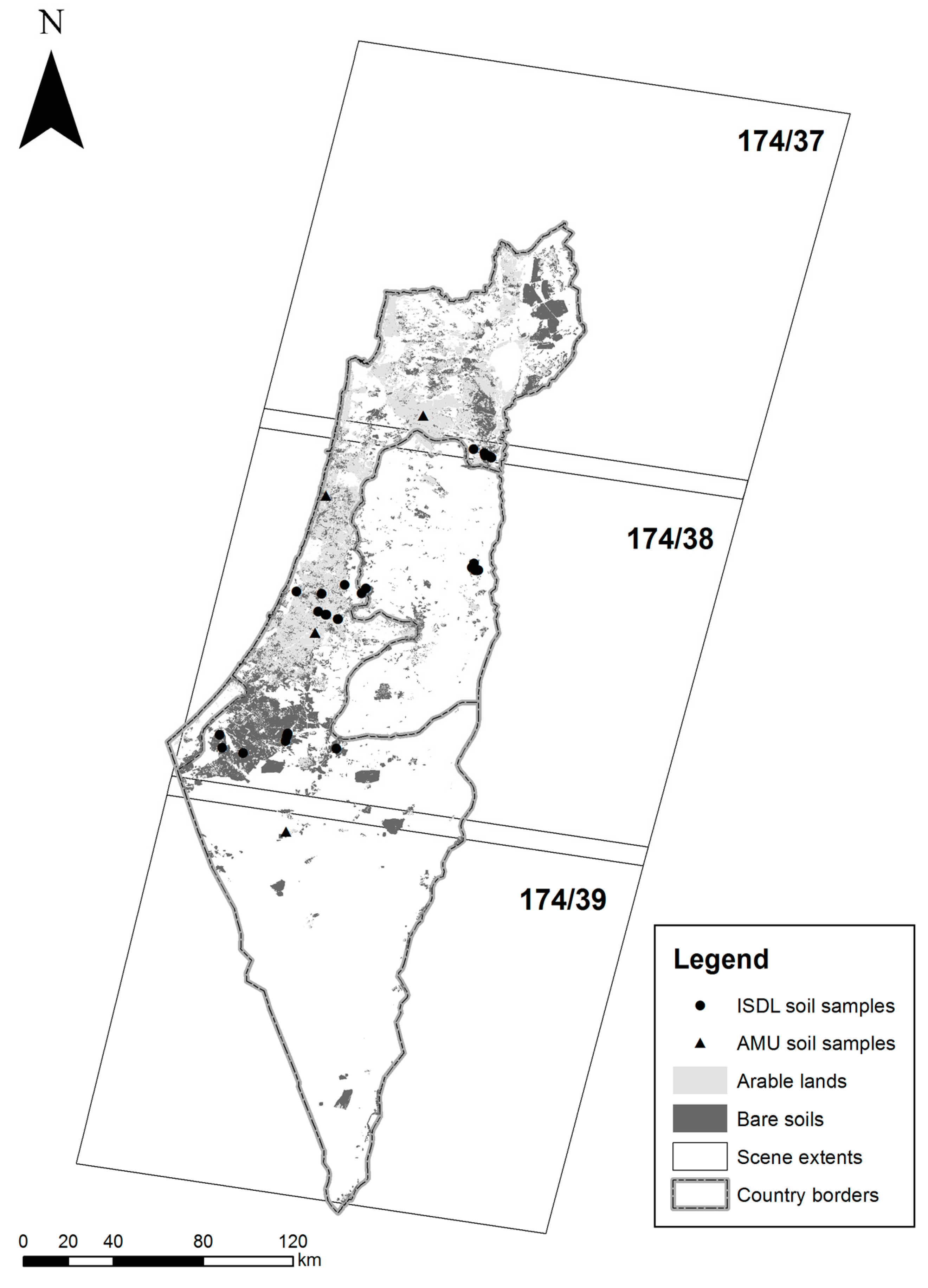
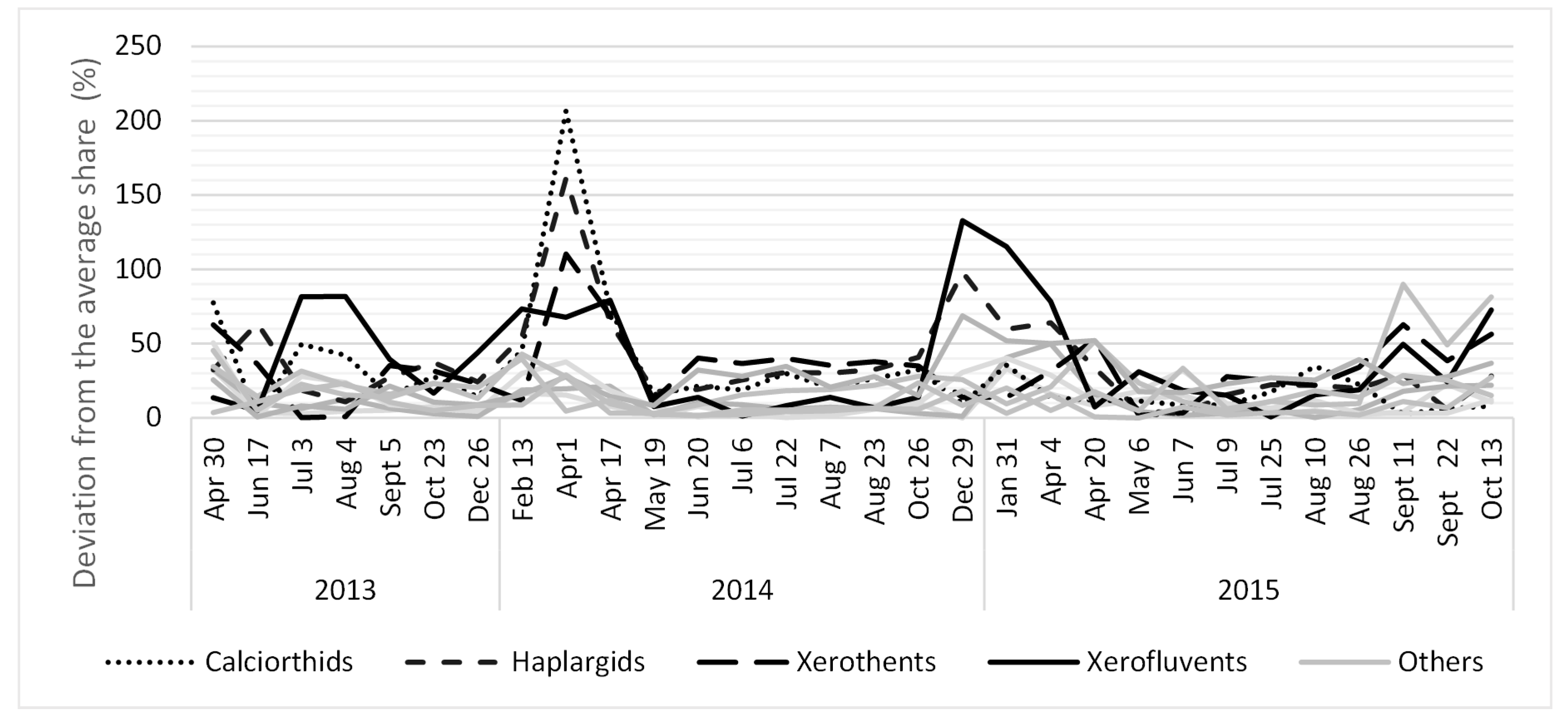
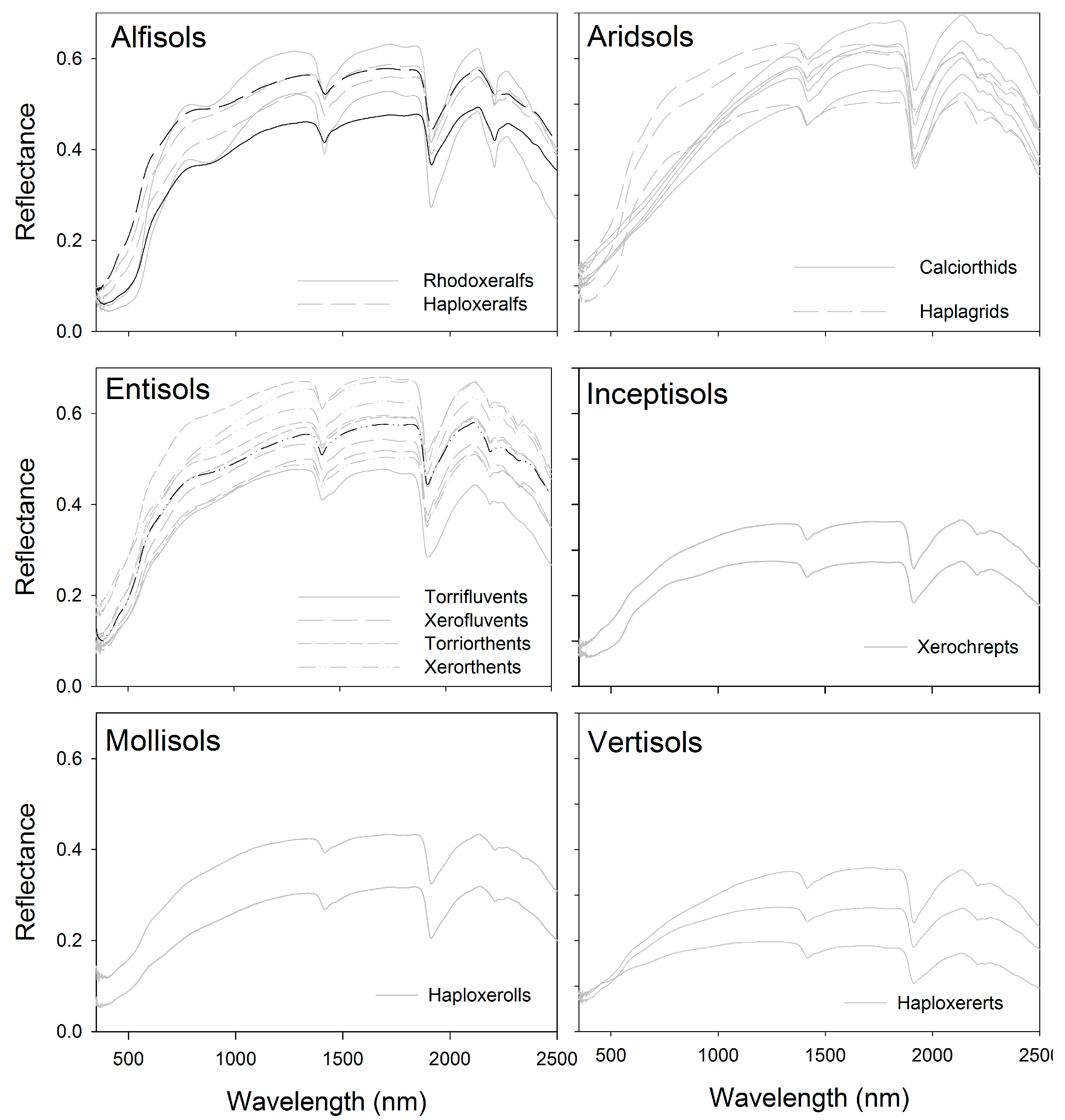
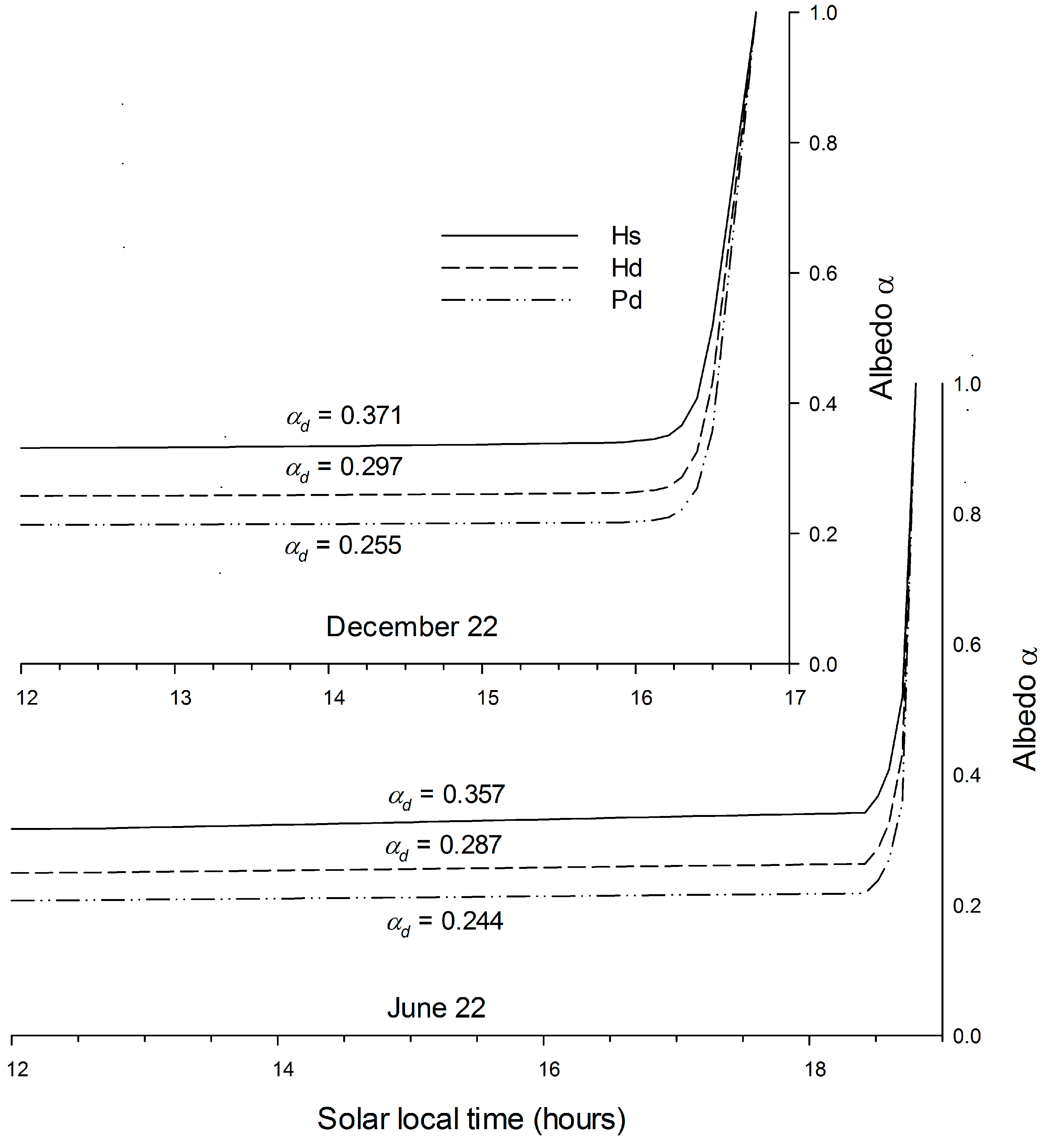
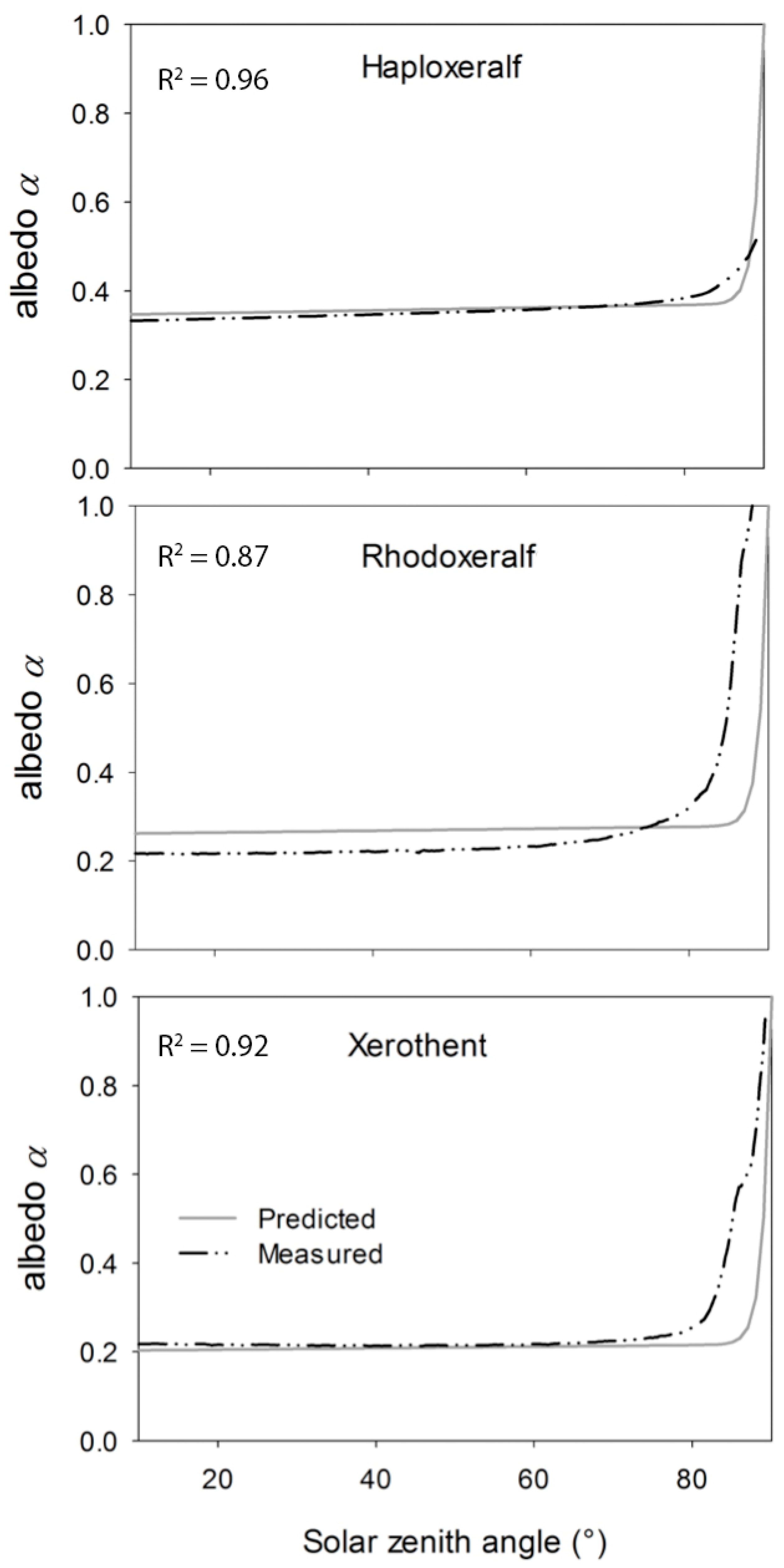


| Order | Suborder | Great Soil Group | ISDL and AMU Symbol | Texture by USDA | Munsell Dry Color | SOC (%) |
|---|---|---|---|---|---|---|
| Alfisols | Xeralfs | Rhodoxeralfs | E7 | SCL | 5YR6/6 | 0.39 |
| Rhodoxeralfs | E8 | LFS | 5YR7/8 | 0.08 | ||
| Rhodoxeralfs | NA1 * | LFS | 5YR4/6 | 0.54 | ||
| Haploxeralfs | S4 | LFS | 7.5YR7/4 | 0.58 | ||
| Haploxeralfs | S6 | SL | 10YR6/4 | 0.83 | ||
| Haploxeralfs | K2 * | L | 10YR7/4 | 0.86 | ||
| Aridosols | Agrids | Calciorthids | K3 | CL | 10YR5/2 | 1.87 |
| Calciorthids | K4 | CL | 10YR6/2 | 2.01 | ||
| Calciorthids | K5 | CL | 10YR6/1 | 1.65 | ||
| Calciorthids | K6 | SCL | 10YR6/1 | 1.70 | ||
| Calciorthids | K7 | CL | 10YR6/2 | 1.59 | ||
| Haplargids | H8 | CL | 7.5YR6/8 | 1.31 | ||
| Haplargids | H10 | C | 7.5YR7/4 | 1.02 | ||
| Haplargids | H11 | SL | 7.5YR7/4 | 0.77 | ||
| Entisols | Fluvents | Torrifluvents | J1 | C | 7.5YR6/4 | 1.40 |
| Torrifluvents | J2 | SIC | 7.5YR4/4 | 2.63 | ||
| Xerofluvents | S5 | LFS | 10YR7/3 | 0.61 | ||
| Xerofluvents | S15 | SCL | 10YR6/4 | 0.65 | ||
| Orthents | Torriorthents | S9 | SL | 10YR7/4 | 0.78 | |
| Torriorthents | S10 | SL | 10YR8/4 | 0.84 | ||
| Torriorthents | S11 | SL | 7.5YR8/3 | 0.60 | ||
| Xerorthents | C2 | SL | 10YR8/3 | 0.59 | ||
| Xerorthents | C3 | SCL | 7.5YR7/3 | 0.86 | ||
| Xerorthents | C5 | C | 10YR8/2 | 1.55 | ||
| Xerorthents | RM5 * | SL | 10YR7/4 | 0.66 | ||
| Inceptisols | Ochrepts | Xerochrepts | A4 | C | 7.5YR4/6 | 3.28 |
| Xerochrepts | A5 | C | 5YR5/6 | 1.46 | ||
| Mollisols | Xerolls | Haploxerolls | B1 | CL | 7.5YR6/3 | 2.85 |
| Haploxerolls | C4 | SC | 7.5YR5/4 | 1.11 | ||
| Vertisols | Xererts | Haploxererts | H4 | CL | 7.5YR6/2 | 2.19 |
| Haploxererts | H1 | CL | 10YR6/3 | 1.61 | ||
| Haploxererts | H2 | C | 10YR5/2 | 3.10 |
© 2018 by the authors. Licensee MDPI, Basel, Switzerland. This article is an open access article distributed under the terms and conditions of the Creative Commons Attribution (CC BY) license (http://creativecommons.org/licenses/by/4.0/).
Share and Cite
Cierniewski, J.; Ceglarek, J.; Karnieli, A.; Ben-Dor, E.; Królewicz, S.; Kaźmierowski, C. Shortwave Radiation Affected by Agricultural Practices. Remote Sens. 2018, 10, 419. https://doi.org/10.3390/rs10030419
Cierniewski J, Ceglarek J, Karnieli A, Ben-Dor E, Królewicz S, Kaźmierowski C. Shortwave Radiation Affected by Agricultural Practices. Remote Sensing. 2018; 10(3):419. https://doi.org/10.3390/rs10030419
Chicago/Turabian StyleCierniewski, Jerzy, Jakub Ceglarek, Arnon Karnieli, Eyal Ben-Dor, Sławomir Królewicz, and Cezary Kaźmierowski. 2018. "Shortwave Radiation Affected by Agricultural Practices" Remote Sensing 10, no. 3: 419. https://doi.org/10.3390/rs10030419





